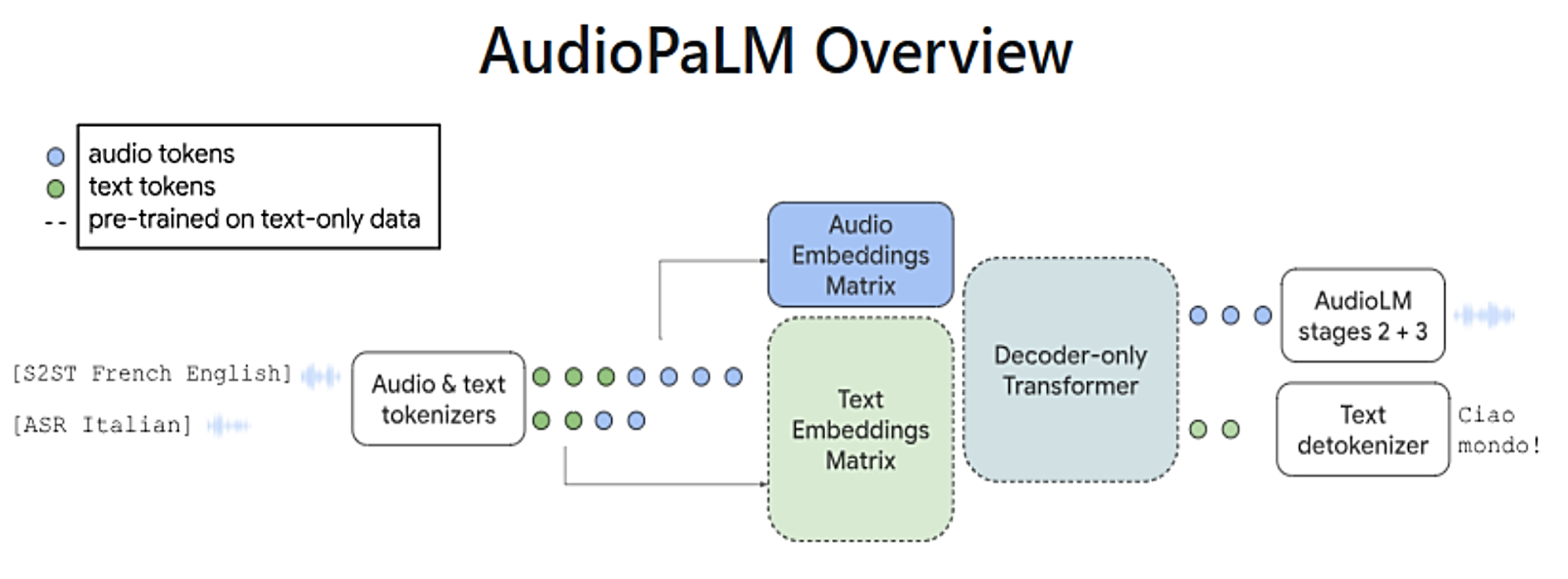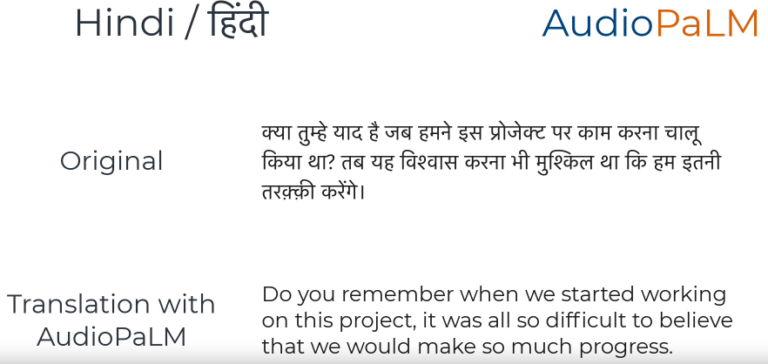In a significant development in the realm of generative AI, tech giant Google has unveiled AudioPaLM, a cutting-edge multimodal language model. This groundbreaking model combines the capabilities of Google’s large language model PaLM-2, introduced at Google I/O 2023, and their generative audio model AudioLM. AudioPaLM establishes an all-encompassing framework that seamlessly integrates text and spoken language, pushing the boundaries of language understanding and generation.
Also Read: Google Unveils PaLM2 to Tackle GPT-4 Effect

The Power of Multimodal Language Processing: AudioPaLM
AudioPaLM represents a major advancement in language processing as it combines the strengths of text-based language models and audio models. Its applications span a wide range, including speech recognition and speech-to-speech translation. Leveraging the expertise of AudioLM, AudioPaLM excels at capturing non-verbal cues such as speaker identification and intonation. Simultaneously, it integrates the linguistic knowledge embedded in text-based language models like PaLM-2. This multimodal approach enables AudioPaLM to handle various tasks that involve both speech and text.
Also Read: AI Starts Dubbing for YouTube in Multiple Languages
A Unified Architecture for Speech and Text: The AudioPaLM Framework
At the core of AudioPaLM lies a powerful large-scale transformer model. Building upon an existing text-based language model, AudioPaLM expands its vocabulary with specialized audio tokens. By training a single decoder-only model capable of handling a mix of speech and text tasks, AudioPaLM consolidates traditionally segregated models into a unified architecture. This approach enables the model to excel in tasks such as speech recognition, text-to-speech synthesis, and speech-to-speech translation, offering a versatile solution for multimodal language processing.

Impressive Performance and Versatility of AudioPaLM
AudioPaLM has demonstrated exceptional performance in speech translation benchmarks, showcasing its ability to provide accurate and reliable translations. Moreover, it delivers competitive outcomes in speech recognition tasks, accurately converting spoken language into text. AudioPaLM can generate transcripts in the original language or provide translations, as well as generate speech based on the input text. This versatility positions AudioPaLM as a powerful tool for bridging the text and voice communication gap.

Google’s Continued Innovations in Audio Generation
AudioPaLM is not Google’s first foray into audio generation. Earlier this year, they introduced MusicLM, a high-fidelity music generative model that creates music based on text descriptions. MusicLM, built on the foundation of AudioLM, utilizes a hierarchical sequence-to-sequence approach to produce high-quality music. Additionally, Google introduced MusicCaps, a curated dataset designed to evaluate text-to-music generation.
Also Read: Top 5 AI Voice Generators: Enhancing Your Business with Next-Gen Voice Solutions
Competition in the Audio Generation Space
Google’s rivals are also making significant strides in the audio generation domain. Microsoft recently launched Pengi, an audio language model that leverages transfer learning to excel in both audio and text tasks. By integrating audio and text inputs, Pengi can generate free-form text output without additional fine-tuning. Similarly, Meta, led by Mark Zuckerberg, introduced MusicGen, a transformer-based model that creates music aligned with existing melodies. Meta’s Voicebox, a multilingual generative AI model, showcases its ability to perform various speech-generation tasks through in-context learning.
Also Read: SoundStorm: Google’s Audio Model Takes Audio Generation by Storm
Our Say
Google’s unveiling of AudioPaLM marks another milestone in the advancement of language models. By seamlessly integrating text and voice, AudioPaLM presents a powerful tool for various applications, from speech recognition to translation. As generative AI continues to evolve, these multimodal language models offer unprecedented capabilities, bringing us closer to a future where text and voice seamlessly interact.
Image Source: cloudbooklet




